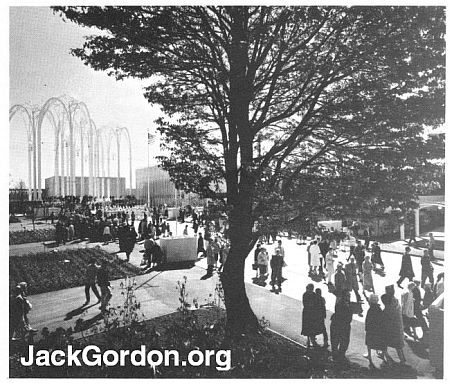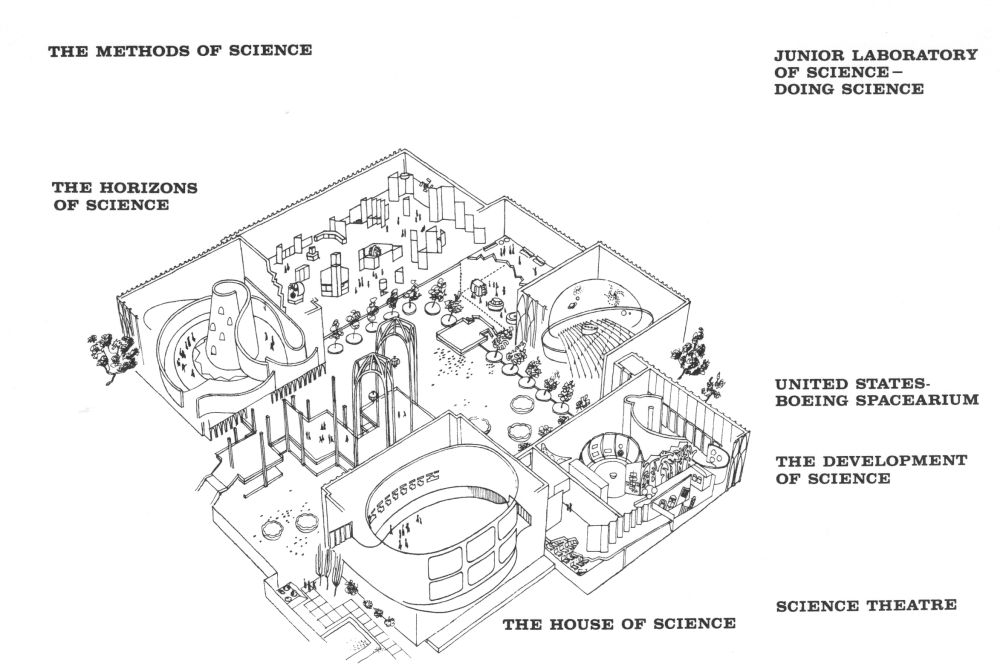
As the Seattle World's Fair Grounds Become The Seattle Center
Formerly the United States Science Exhibit, the new Pacific Science Center is a permanent complex designed to further the interest and knowledge of Americans in Science.

More than 90 per cent of Fair exhibits remain in the Center, including the six-screen motion picture presentation by Charles Eames, "The House of Science," and the Boeing Company Spacearium. Both are the only presentations of their kind in the world.
The Center will begin seven-day operations on June 1. Presently, it is open Saturdays and Sundays, with special Wednesdays openings for school groups. Several university classes are also being held here.
Under the operation of the non-profit Pacific Science Center Foundation, the Center recently appointed Dr. Walter F. Hiltner as director. Hiltner, chief of the space propulsion unit of Boeing's Aerospace Division, had a major role in the development of the Spacearium and is a world authority on space flight.
Visitors to the Center will find the stress on pure science — research for the sake of knowledge. The story ranges from pre-history, when primitive man first became intrigued and curious about his surroundings, to the threshold of tomorrow's knowledge.
Building 1 houses the Eames Theater, showing the development of science — twenty-five centuries of progress speed by in a four-minute animated sequence, followed by eight minutes of the scientist at work — a view of the landscape of science.
In Building 2, the Development of Science, man's curiosity highlights the exhibits. Highlight exhibits here include the development of mathematics, theories of life as presented through the DNA molecule and the Musser Planetarium, newest exhibit at the Center.

The 12 minute Spacearium trip in Building 3, enveloping 750 persons in an imaginary trip through outer space, is as scientifically accurate as a panel of astronomers could make it. The Spacearium uses the world's largestprojection screen (78 feet in diameter, eight tons of aluminum dome) and the largest single lens ever produced for filming and projection.
The 290-seat Science Theater is used for special films and lecture-demonstrations. Some of the series presented since the closing of the Fair have included "Adventures in Science," with prominent local speakers, and professional training programs for elementary and secondary teachers.
Closed to adults during the Fair, the Junior Laboratory highlights 26 participating exhibits — each illustrating a basic principle of Science. This is one of the most popular areas.
Exhibits in the Methods of Science Pavilion (building 4) show science at work. Here present study and work is highlighted — parts of the building, in fact, are presently in use for scientific experiements.
Building 5, Horizons of Science during the Fair, is presently being reorganized to better fit the Center program.
The Center was designed by Minoru Yamasaki, Seattle-born architect, and Naramore, Bain, Brady & Johansen, who utilized gothic-type arches and huge reflector pools (larger than a football field) to give the area a restful and serene atmosphere.
Admission to the Center is $1 for adults, 50 cents for students through high school. Families are admitted for $2. Press representatives may show their credentials at the office for accreditation.

You are at JackGordon.org,
a salute to John F "Jack" Gordon, Mr. Seattle
Copyright © 2002-2017 John R. Gordon